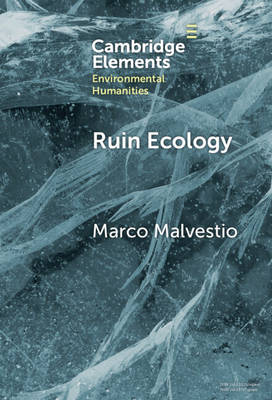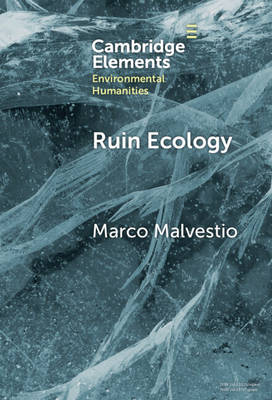
- Afhalen na 1 uur in een winkel met voorraad
- Gratis thuislevering in België vanaf € 30
- Ruim aanbod met 7 miljoen producten
- Afhalen na 1 uur in een winkel met voorraad
- Gratis thuislevering in België vanaf € 30
- Ruim aanbod met 7 miljoen producten
Zoeken
€ 112,95
+ 225 punten
Uitvoering
Omschrijving
This Element discusses the presence of ruins in contemporary environmental imagination. Contemporary ruins, much more than those that served as constituents of Romantic and Gothic aesthetics, simultaneously express a fascination with and a dread of the non-human agencies at play in the world, while also countering the nostalgic dimension of traditional representations of ruins. The contemporary success of ruins can be connected to the sense of planetary precarity induced by anthropogenic climate change, and to the widespread presence of eco-anxiety in the public conscience. Moreover, at the centre of ruins' aesthetic power is the interaction of human and non-human forces, and in the process of ruination, buildings and monuments find new meaning thanks to the intervention of external agents that human civilization has long attempted to tame or eliminate and that make a disturbing return as soon as anthropic activity ceases.
Specificaties
Betrokkenen
- Auteur(s):
- Uitgeverij:
Inhoud
- Aantal bladzijden:
- 80
- Taal:
- Engels
- Reeks:
Eigenschappen
- Productcode (EAN):
- 9781009683029
- Verschijningsdatum:
- 6/11/2025
- Uitvoering:
- Hardcover
- Formaat:
- Genaaid
- Afmetingen:
- 152 mm x 229 mm
- Gewicht:
- 281 g

Alleen bij Standaard Boekhandel
+ 225 punten op je klantenkaart van Standaard Boekhandel
Beoordelingen
We publiceren alleen reviews die voldoen aan de voorwaarden voor reviews. Bekijk onze voorwaarden voor reviews.








